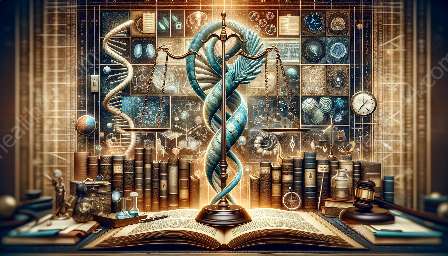Counterfeit drugs pose a significant threat to public health and safety, prompting stringent regulatory measures and medical laws to combat this issue. This topic cluster explores the impact of counterfeit drugs on pharmaceutical regulations and medical laws and the steps taken to address this pressing concern.
The Menace of Counterfeit Drugs
Counterfeit drugs refer to medications that are produced and distributed without proper authorization and oversight. These drugs may contain incorrect or harmful ingredients, incorrect dosages, or may be entirely fake. The proliferation of counterfeit drugs has detrimental effects on public health, including treatment failure, drug resistance, and even fatalities.
Pharmaceutical Regulations and Counterfeit Drugs
Pharmaceutical regulations play a pivotal role in safeguarding the integrity and safety of medications. Regulatory bodies such as the Food and Drug Administration (FDA) in the United States and the European Medicines Agency (EMA) in Europe enforce stringent guidelines to ensure that pharmaceutical products meet quality, safety, and efficacy standards. However, counterfeit drugs continue to pose a persistent challenge to these regulations, necessitating proactive measures to protect consumers and healthcare systems.
Challenges in Regulatory Oversight
The complex nature of global pharmaceutical supply chains and the emergence of online pharmacies have created loopholes that counterfeiters exploit to introduce fake medications into the market. Insufficient regulatory oversight, especially in developing countries, further exacerbates the problem, allowing counterfeit drugs to infiltrate legitimate distribution channels.
Regulatory Measures to Combat Counterfeit Drugs
Regulatory agencies and governments worldwide have implemented various measures to address the proliferation of counterfeit drugs. These measures encompass stringent licensing requirements for pharmaceutical manufacturers, distributors, and pharmacies, as well as enhanced surveillance and tracking systems to trace the movement of medications throughout the supply chain.
Serialization and Track-and-Trace Technologies
Serialization involves assigning a unique identifier, such as a barcode or QR code, to each individual drug product, allowing it to be tracked and authenticated throughout the distribution process. Track-and-trace technologies utilize these unique identifiers to monitor the movement of drugs from production to consumption, enabling rapid identification of counterfeit products.
Intelligence and Law Enforcement Cooperation
Collaboration between regulatory agencies, law enforcement entities, and international organizations has become essential in combating the illicit trade of counterfeit drugs. Sharing intelligence, conducting coordinated investigations, and enforcing legal actions against counterfeiters are critical components of this multi-faceted approach.
Medical Laws and Patient Safety
The legal framework surrounding healthcare and medication plays a crucial role in protecting patient safety and ensuring access to genuine pharmaceutical products. Medical laws govern aspects such as prescription requirements, dispensing practices, and liability for harm caused by counterfeit drugs.
Prescription and Dispensing Regulations
Stringent prescription and dispensing regulations aim to prevent unauthorized access to medications and curb the distribution of counterfeit drugs. For instance, healthcare professionals are required to adhere to specific protocols when prescribing and dispensing medications, including verifying the authenticity of pharmaceutical products before distributing them to patients.
Liability and Compensation
In cases where patients suffer harm due to counterfeit drugs, medical laws provide a framework for holding responsible parties accountable and seeking compensation for damages. This aspect of medical law is crucial in providing recourse for individuals adversely affected by counterfeit medications.
International Collaboration and Harmonization
Given the global nature of pharmaceutical supply chains and the cross-border trade of medications, international collaboration and harmonization of regulatory frameworks are integral to combating counterfeit drugs. Initiatives such as the World Health Organization's (WHO) International Medical Products Anti-Counterfeiting Taskforce (IMPACT) facilitate cooperation among countries to tackle the challenge of counterfeit drugs.
Harmonized Regulatory Standards
Efforts to harmonize regulatory standards and promote mutual recognition of pharmaceutical approvals contribute to a cohesive global approach in combating counterfeit drugs. Aligning regulatory practices across borders enhances the consistency and effectiveness of measures aimed at preventing the entry of counterfeit medications into the market.
Information Sharing and Capacity Building
Information sharing platforms and capacity building initiatives foster collaboration among regulatory agencies and healthcare authorities, enabling the exchange of best practices, intelligence on counterfeit drug trends, and the development of expertise in detecting and combating counterfeit medications.
Conclusion
Counterfeit drugs present a multifaceted challenge that intersects with pharmaceutical regulations, medical law, and patient safety. By understanding the impact of counterfeit drugs and the regulatory measures implemented, stakeholders in the pharmaceutical and healthcare sectors can work towards mitigating the risks associated with counterfeit medications and safeguarding public health.



